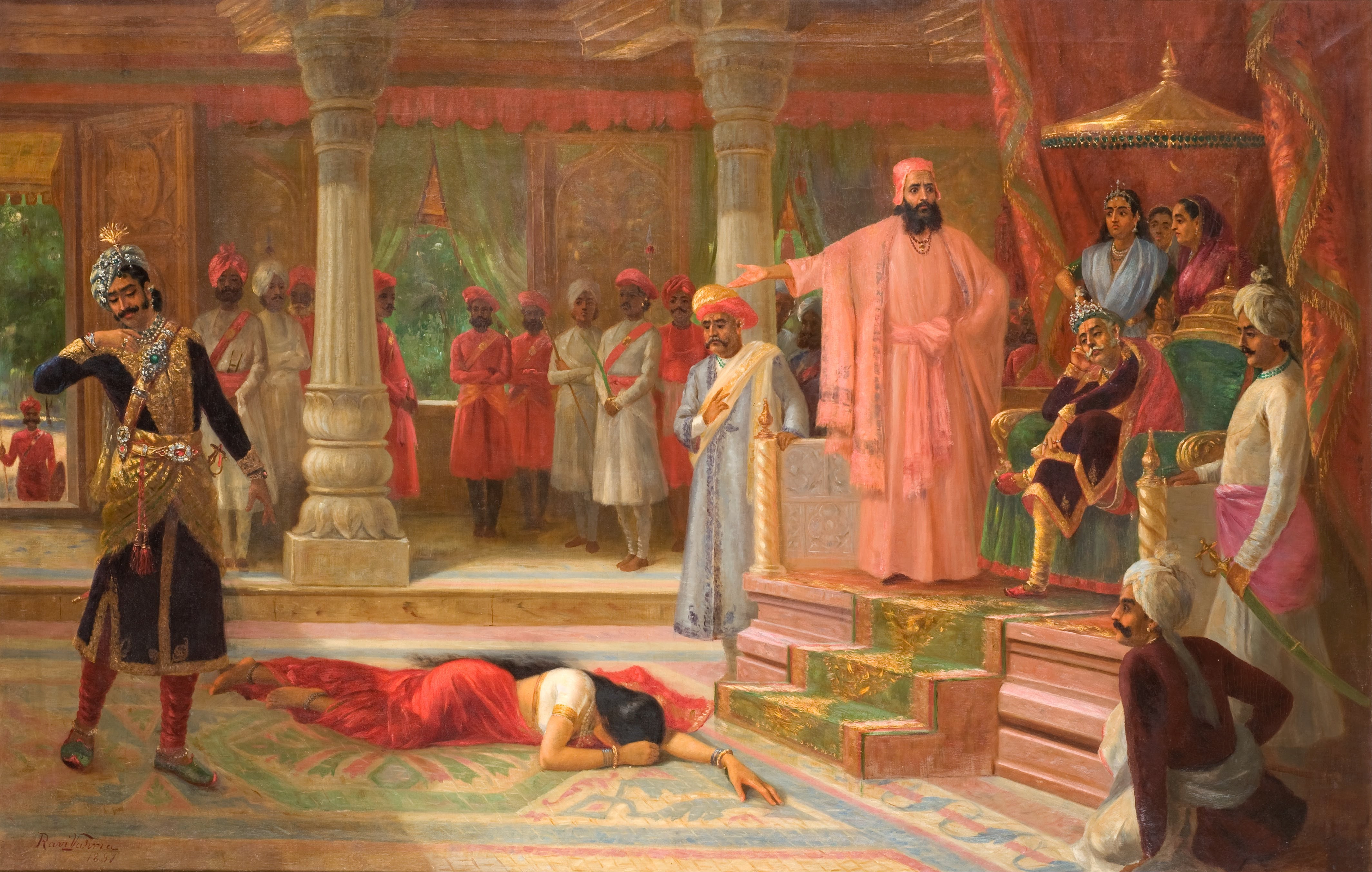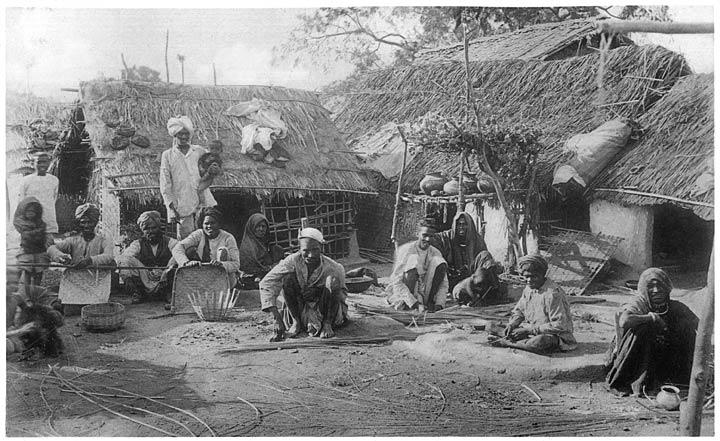|
Sūta
Sūta (Sanskrit: सूत) refers both to the bards of Hindu Puranic stories and to a mixed caste. According to ''Manu Smriti'' (10.11.17), the sūta caste are children of a Kshatriya father and a Brahmin mother. And the narrator of several of the Puranas, Ugrasrava Sauti, son of Romaharshana, was also called Sūta. Authorities are divided on whether the bards were members of the sūta caste. Ludo Rocher points out that the use of sūta as a caste may have been separate from the earlier use of sūta to describe Romaharshana and his son Ugrasrava Sauti. R. N. Dandekar states that the sūta caste is different from the narrator of the Puranas. "Brāhmaṇyāṁ kṣatriyātsūtō prātilōmyēna jāyatē. Gajabandhanamaśvānāṁ vāhanaṁ karma sārathēḥ.29. Vaiśyadharmēṣu sūtasya adhikāraḥ kvacidbhavēt. Jātivi0 – kṣatriyāṇāmasau dharma kartumar'hatyaśēṣataḥ. Kin̄cica kṣatrajātibhyō n'yūnatā tasya jāyatē ॥ ३० ॥" "In Brahmin wome ... [...More Info...] [...Related Items...] OR: [Wikipedia] [Google] [Baidu] |
Ugrasrava Sauti
Ugrashravas Sauti (Sanskrit: उग्रश्रवस् सौती, also Ugraśravas, Sauti, Sūta, Śri Sūta, Suta Gosvāmī) is a character in Hindu literature, featured as the narrator of the ''Mahābhārata'' and several Puranas including the Shiva Purana, Bhagavata Purana, Harivamsa, Brahmavaivarta Purana, and Padma Purana, with the narrations typically taking place before the sages gathered in Naimisha Forest. He is the son of Lomaharshana (or Romaharshana), and a disciple of Vyasa, the author of the ''Mahābhārata''. Ugrashravas is a bard of Puranic literature. The entire ''Mahābhārata'' epic is structured as a dialogue between Ugrasravas Sauti (the narrator) and sage Saunaka (the narratee). The narration (''Bharata'') of the history of Bharata kings by sage Vaisampayana to Kuru king Janamejaya is embedded within this narration of Ugrasravas Sauti. Vaisampayana's narration (''Jaya'') in turn contains the narration of Kurukshetra War by Sanjaya, to Kuru k ... [...More Info...] [...Related Items...] OR: [Wikipedia] [Google] [Baidu] |
Karna
Karna (Sanskrit: कर्ण, IAST: ''Karṇa''), also known as Vasusena, Anga-Raja, Sutaputra and Radheya, is one of the major characters in the Hindu epic ''Mahābhārata''. He is the son of Surya (the Sun deity) and princess Kunti (later the Pandava queen). Kunti was granted the boon to bear a child with desired divine qualities from the gods and without much knowledge, Kunti invoked the sun god to confirm it if it was true indeed. Karna was secretly born to an unmarried Kunti in her teenage years, and fearing outrage and backlash from society over her premarital pregnancy, Kunti had to abandon the newly born Karna adrift in a basket on the Ganges. The basket is discovered floating on the Ganges River. He is adopted and raised by foster ''Suta'' parents named Radha and Adhiratha Nandana of the charioteer and poet profession working for king Dhritarashtra. Karna grows up to be an accomplished warrior of extraordinary abilities, a gifted speaker and becomes a loyal friend of ... [...More Info...] [...Related Items...] OR: [Wikipedia] [Google] [Baidu] |
Kichaka
Kichaka () is a character in the ''Mahabharata'', who served as the commander-in-chief of King Virata's army in the Matsya Kingdom. He was the son of ''Sūta'' king of the Kekaya and Malavi, and had 105 younger brothers known as the Upa-Kichakas. His sister, Sudeshna, was married to King Virata, and Kichaka lived in the Virata palace after her marriage. Renowned for his strength and military prowess, Kichaka had frequently defeated King Susharman of Trigarta in battle and is described to wield more authority than Virata himself. His story is most notable for his encounter with Draupadi during the Pandavas' incognito stay in Matsya. After repeatedly harassing Draupadi, he was killed by her husband Bhima, who crushed him to death. Literary background The ''Mahabharata'', one of the Sanskrit epics from the Indian subcontinent, other being the ''Ramayana''. It mainly narrates the events and aftermath of the Kurukshetra War, a war of succession between two groups of princely c ... [...More Info...] [...Related Items...] OR: [Wikipedia] [Google] [Baidu] |
Romania
Romania is a country located at the crossroads of Central Europe, Central, Eastern Europe, Eastern and Southeast Europe. It borders Ukraine to the north and east, Hungary to the west, Serbia to the southwest, Bulgaria to the south, Moldova to the east, and the Black Sea to the southeast. It has a mainly continental climate, and an area of with a population of 19 million people. Romania is the List of European countries by area, twelfth-largest country in Europe and the List of European Union member states by population, sixth-most populous member state of the European Union. Europe's second-longest river, the Danube, empties into the Danube Delta in the southeast of the country. The Carpathian Mountains cross Romania from the north to the southwest and include Moldoveanu Peak, at an altitude of . Bucharest is the country's Bucharest metropolitan area, largest urban area and Economy of Romania, financial centre. Other major urban centers, urban areas include Cluj-Napoca, Timiș ... [...More Info...] [...Related Items...] OR: [Wikipedia] [Google] [Baidu] |
Sanskrit
Sanskrit (; stem form ; nominal singular , ,) is a classical language belonging to the Indo-Aryan languages, Indo-Aryan branch of the Indo-European languages. It arose in northwest South Asia after its predecessor languages had Trans-cultural diffusion, diffused there from the northwest in the late Bronze Age#South Asia, Bronze Age. Sanskrit is the sacred language of Hinduism, the language of classical Hindu philosophy, and of historical texts of Buddhism and Jainism. It was a lingua franca, link language in ancient and medieval South Asia, and upon transmission of Hindu and Buddhist culture to Southeast Asia, East Asia and Central Asia in the early medieval era, it became a language of religion and high culture, and of the political elites in some of these regions. As a result, Sanskrit had a lasting effect on the languages of South Asia, Southeast Asia and East Asia, especially in their formal and learned vocabularies. Sanskrit generally connotes several Indo-Aryan languages# ... [...More Info...] [...Related Items...] OR: [Wikipedia] [Google] [Baidu] |
Manu Smriti
The ''Manusmṛti'' (), also known as the ''Mānava-Dharmaśāstra'' or the Laws of Manu, is one of the many legal texts and constitutions among the many ' of Hinduism. Over fifty manuscripts of the ''Manusmriti'' are now known, but the earliest discovered, most translated, and presumed authentic version since the 18th century is the "Kolkata (formerly Calcutta) manuscript with Kulluka Bhatta commentary". Modern scholarship states this presumed authenticity is false, and that the various manuscripts of ''Manusmriti'' discovered in India are inconsistent with each other. The metrical text is in Sanskrit, is dated to the 2nd century BCE to 2nd century CE, and presents itself as a discourse given by Manu (Hinduism), Manu (Svayambhuva) and Bhrigu on dharma topics such as duties, rights, laws, conduct, and virtues. The text's influence had historically spread outside India, influencing Hindu kingdoms in modern Cambodia and Indonesia. In 1776, ''Manusmriti'' became one of the first ... [...More Info...] [...Related Items...] OR: [Wikipedia] [Google] [Baidu] |
Kshatriya
Kshatriya () (from Sanskrit ''kṣatra'', "rule, authority"; also called Rajanya) is one of the four varnas (social orders) of Hindu society and is associated with the warrior aristocracy. The Sanskrit term ''kṣatriyaḥ'' is used in the context of later Vedic society wherein members were organised into four classes: ''brahmin'', kshatriya, '' vaishya,'' and '' shudra''. History Early Rigvedic tribal monarchy The administrative machinery in Vedic India was headed by a tribal king called a Rajan whose position may or may not have been hereditary. The king may have been elected in a tribal assembly (called a Samiti), which included women. The Rajan protected the tribe and cattle; was assisted by a priest; and did not maintain a standing army, though in the later period the rulership appears to have risen as a social class. The concept of the fourfold varna system is not yet recorded. Later Vedic period The hymn '' Purusha Sukta'' in the ''Rigveda'' describes the symbolic crea ... [...More Info...] [...Related Items...] OR: [Wikipedia] [Google] [Baidu] |
Brahmin
Brahmin (; ) is a ''Varna (Hinduism), varna'' (theoretical social classes) within Hindu society. The other three varnas are the ''Kshatriya'' (rulers and warriors), ''Vaishya'' (traders, merchants, and farmers), and ''Shudra'' (labourers). The traditional occupation of Brahmins is that of priesthood (purohit, pandit, or pujari) at Hindu temples or at socio-religious ceremonies, and the performing of rite of passage rituals, such as solemnising a wedding with hymns and prayers.James Lochtefeld (2002), Brahmin, The Illustrated Encyclopedia of Hinduism, Vol. 1: A–M, Rosen Publishing, , page 125 Traditionally, Brahmins are accorded the supreme ritual status of the four social classes, and they also served as spiritual teachers (guru or acharya). In practice, Indian texts suggest that some Brahmins historically also became agriculturalists, warriors, traders, and had also held other occupations in the Indian subcontinent.GS Ghurye (1969), Caste and Race in India, Popular Prakasha ... [...More Info...] [...Related Items...] OR: [Wikipedia] [Google] [Baidu] |
Caste Offspring Classification
A caste is a fixed social group into which an individual is born within a particular system of social stratification: a caste system. Within such a system, individuals are expected to marry exclusively within the same caste (endogamy), follow lifestyles often linked to a particular occupation, hold a ritual status observed within a hierarchy, and interact with others based on cultural notions of exclusion, with certain castes considered as either more pure or more polluted than others. The term "caste" is also applied to morphological groupings in eusocial insects such as ants, bees, and termites. The paradigmatic ethnographic example of caste is the division of India's Hindu society into rigid social groups. Its roots lie in South Asia's ancient history and it still exists; however, the economic significance of the caste system in India seems to be declining as a result of urbanisation and affirmative action programs. A subject of much scholarship by sociologists and anthrop ... [...More Info...] [...Related Items...] OR: [Wikipedia] [Google] [Baidu] |
Mahābhārata
The ''Mahābhārata'' ( ; , , ) is one of the two major Sanskrit epics of ancient India revered as Smriti texts in Hinduism, the other being the '' Rāmāyaṇa''. It narrates the events and aftermath of the Kurukshetra War, a war of succession between two groups of princely cousins, the Kauravas and the Pāṇḍavas. It also contains philosophical and devotional material, such as a discussion of the four "goals of life" or '' puruṣārtha'' (12.161). Among the principal works and stories in the ''Mahābhārata'' are the ''Bhagavad Gita'', the story of Damayanti, the story of Shakuntala, the story of Pururava and Urvashi, the story of Savitri and Satyavan, the story of Kacha and Devayani, the story of Rishyasringa and an abbreviated version of the ''Rāmāyaṇa'', often considered as works in their own right. Traditionally, the authorship of the ''Mahābhārata'' is attributed to Vyāsa. There have been many attempts to unravel its historical growth and comp ... [...More Info...] [...Related Items...] OR: [Wikipedia] [Google] [Baidu] |
Kurukshetra War
The Kurukshetra War (), also called the Mahabharata War, is a war described in the Hindu Indian epic poetry, epic poem ''Mahabharata'', arising from a dynastic struggle between two groups of cousins, the Kauravas and the Pandavas, for the throne of Hastinapura. The war is used as the context for the dialogues of the ''Bhagavad Gita. Background The ''Mahābhārata'' is an account of the life and deeds of several generations of a ruling dynasty called the Kuru (Hindu mythology), Kuru clan. Central to the epic is an account of a war that took place between two rival families belonging to this clan. Kurukshetra (literally "Kshetram, Region of the Kurus"), also known as Dharmakshetra (the "Region of Dharma"), was the battleground on which the Kurukshetra War was fought. The first ''Mahābhārata'' says that this site was chosen because a sin committed on land was forgiven because of the land's sanctity. The events of the war make up more than a quarter of the ''Mahabharata''. The ... [...More Info...] [...Related Items...] OR: [Wikipedia] [Google] [Baidu] |







